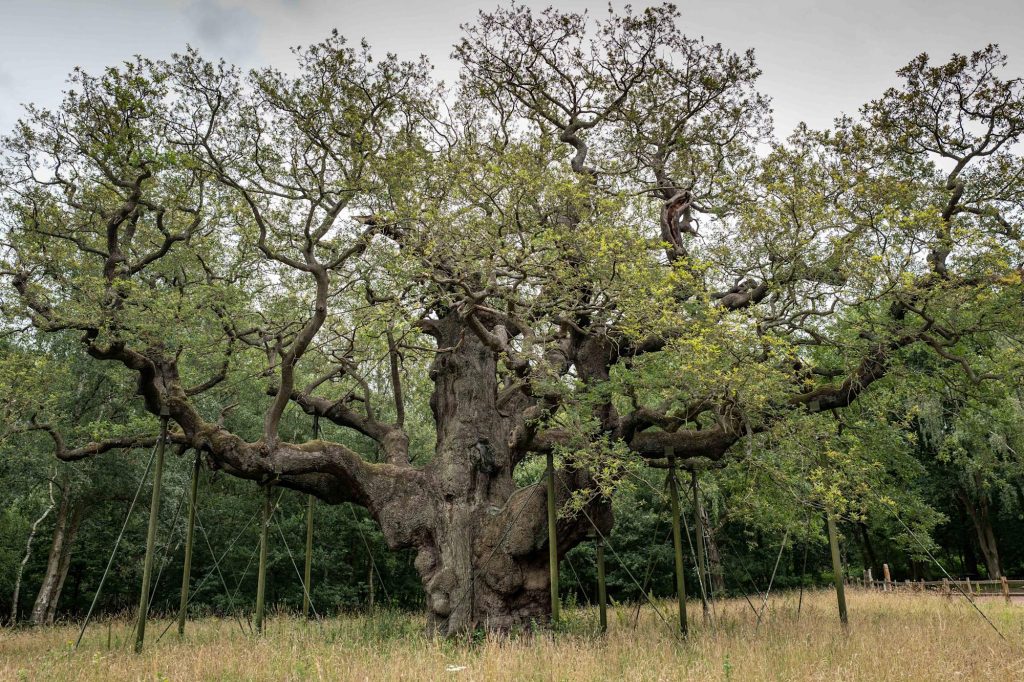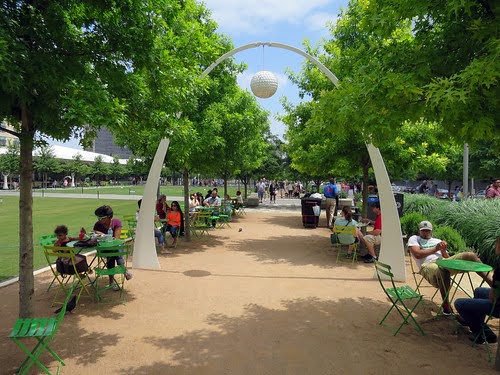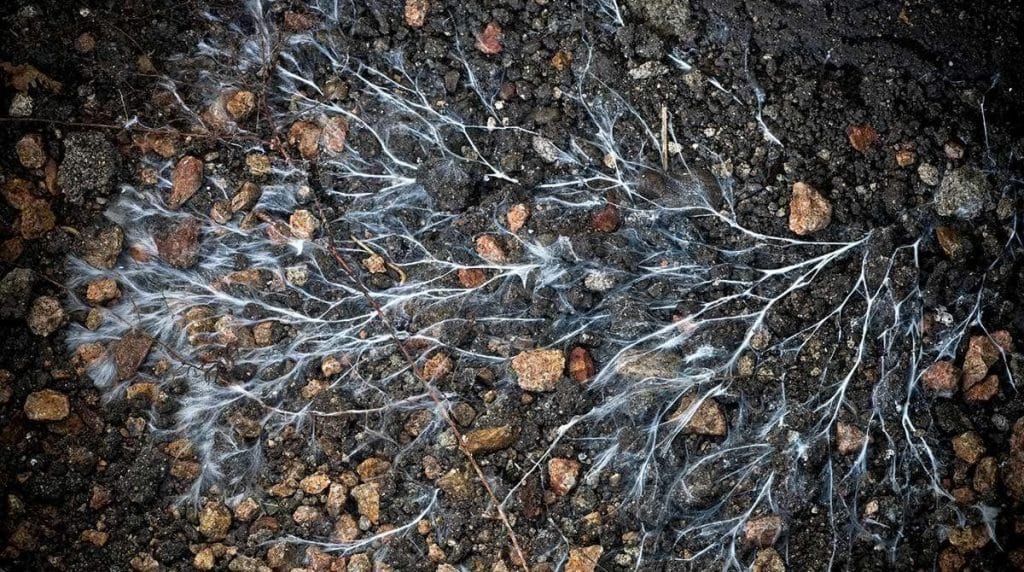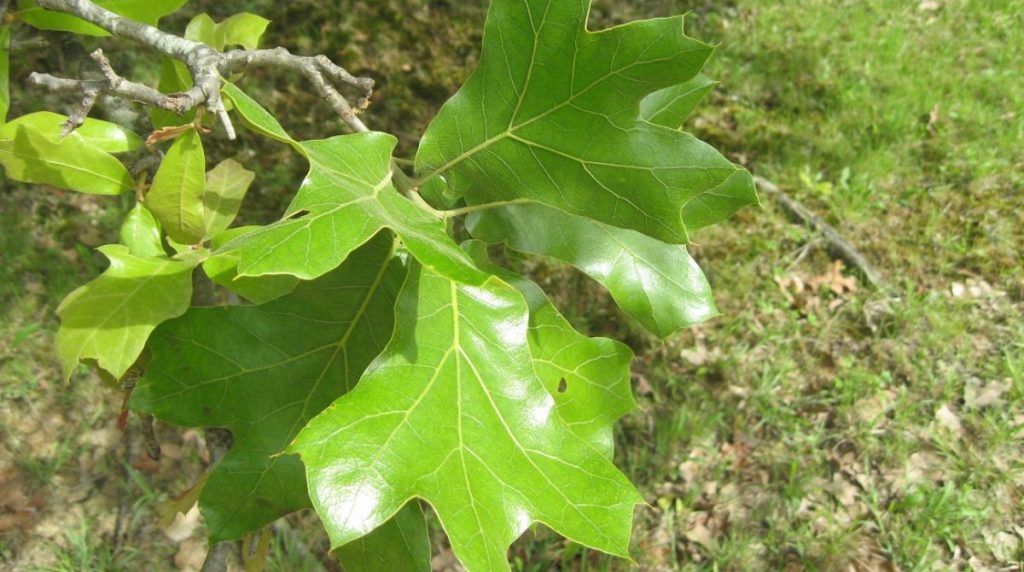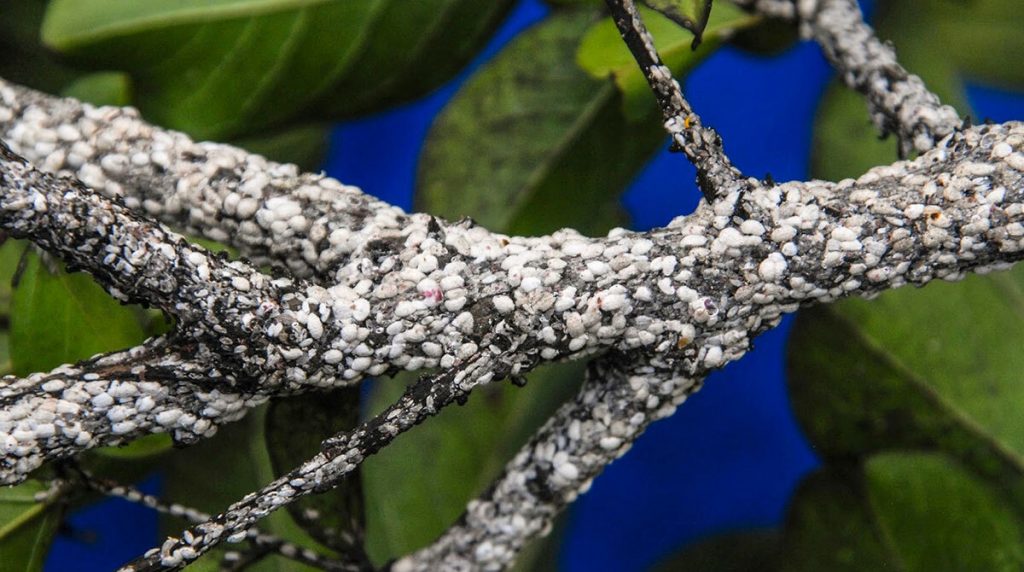
How To Control Crape Myrtle Bark Scale
Date April 08, 2021
Category
If you’ve spent any amount of time in the Dallas-Fort Worth metroplex, then you know we love our Crape Myrtles. What’s not to love? They produce multiple rounds of showy, fragrant flowers that rain color into our yards all summer long. They’re generally known for their hardiness and vivacity, but no tree is invincible to all pests or disease, and Crape Myrtles are no exception. One pest, in particular, Crape Myrtle Bark Scale, is widespread among Crape Myrtles in North Texas. If you want to learn more about this common pest, read on to learn how to spot Crape Myrtle Bark Scale and what to do about it.
About Crape Myrtles
Crape Myrtles (also spelled Crepe Myrtle) are trees and shrubs, usually between 15-20 feet in height, best recognized for their stunning, long-lasting summer blooms. There are several types of Crape Myrtles. In Texas, you’ll primarily find the varieties that thrive in heat and humidity and tolerate drought. Crape Myrtles also do well in many soil types, including the alkaline clay found throughout North Texas. Aside from their beautiful blooms, Crape Myrtles have sleek, slender branches with thin, attractive bark that periodically sheds. They come in multiple varieties, sizes, and colors, from a soft blush or lavender to a striking Fuschia.
What is Crape Myrtle Bark Scale?
Crape Myrtle Bark Scale (or Crapemyrtle Bark Scale) was first identified in Texas in 2004, making it one of the more recent additions to our list of potential ailments for Crape Myrtle trees. However, it has quickly made its presence known and is now one of the most common Crape Myrtle pests in the Dallas-Fort Worth area.
It is easily recognizable by its felt-like bumpy texture. The adult females are covered in gray or white encrustations that bleed a pink liquid when scratched. They can cover whole sections of the trunk or branches, giving the tree a scaly look.
These pests feed on the sap of Crape Myrtle trees, and, like other sap-sucking insects, they do not fully digest their food, leaving behind a sticky liquid called honeydew. If not handled, this can lead to another problem: sooty mold.
What are the symptoms?
Crape Myrtle Bark Scale is generally pretty easy to identify, but some other pests cause similar symptoms, so here’s what you want to look for if you think your tree or shrub is infested with Bark Scale:
- Crape Myrtles usually leaf out in the spring and then bloom sometime from early to mid-summer, but a Crape Myrtle that’s infested might leaf out or bloom later than usual, or they might produce fewer blooms. These trees tend to be the last to leaf out in the spring, so don’t panic if it’s a little late.
- Crape Myrtle Bark Scales are gray or white encrustations with a bumpy, felt-like texture. If you squish or stab the white spots, they will “bleed” pink or red. The females produce 100 to 300 pink eggs, which hatch into tiny, pink crawlers. Crawlers are the most mobile life stage. They leave the white, waxy cover and find a news feed site. Once they settle, they generally become immobile unless disturbed. Immature females have hairy, dark pink, or purplish bodies. Like females, late-instar males grow a bumpy, felt-like cover until they fully develop. Once fully grown, they leave the cover and fly to the adult females.
- Crape Myrtle Bark Scale will usually first appear around pruning sites or branch crotches. If left untouched, they will eventually cover entire trunk sections, the branches, and the twigs. You can find them anywhere except on the foliage.
- These pests produce copious amounts of a sticky liquid called honeydew so that you might recognize them by that or the Sooty Mold.
- Sooty mold is a fungus covering the leaves and branches and looks like you dumped the contents of your fireplace onto your Crape Myrtle. It’s not growing on the tree but rather on the honeydew, which scales or other sap-sucking insects can cause.
How can you prevent it?
The best way to prevent Crape Myrtle Bark Scale is to choose a disease-resistant cultivar when planting. Many popular National Arboretum cultivars are relatively resistant to the common Crape Myrtle diseases and pests, including Bark Scale. If you don’t have that option, you should ensure your Crape Myrtle is as healthy as possible. Things like proper pruning, soil conditioning, and supplemental watering will boost your tree’s overall health and make it less likely to be negatively affected by pests, diseases, or harsh weather events. Our team at TreeNewal can visit your property to assess your Crape Myrtle tree and determine a tree health care plan to optimize its health. Call today to arrange an appointment with an ISA Certified Arborist.
What if your Crape Myrtle has Bark Scale?
The first thing you should do to get rid of the Crape Myrtle Bark Scale is to wash the tree’s trunk and limbs with a mild mixture of dish soap and water applied by a soft brush. If that doesn’t do the trick, reach out to our tree care experts for assistance.
What if the Bark Scale has led to Sooty Mold?
The good news about Sooty Mold is that it’s primarily an aesthetic issue. If handled quickly, it won’t harm your tree. However, if it’s left unattended, it could weaken your tree’s health over time by blocking the leaves from getting enough sunlight, making your tree susceptible to more dangerous issues. The best way to get rid of Sooty Mold is to get rid of the insects causing the honeydew. Once you handle the insect infestation, you can wash the Sooty Mold away, or it will eventually fall away on its own. If you still have concerns, reach out to our team to talk about our tree services in Dallas, TX.
TreeNewal’s ISA Certified Arborists can help!
We know you love your Crape Myrtle. You wouldn’t be reading this if you didn’t. If you have been battling the issues mentioned above or noticed other possible ailments, our tree doctors in Dallas are ready to help. TreeNewal offers expert tree care services, such as pest and disease control, as well as tree trimming and tree removal. If you have questions or concerns about tree care, TreeNewal is a certified arborist tree service that can handle all your professional tree care needs. For more information, go to our website at treenewal.com. To set up an appointment, call us at tel:(817) 592-6846.
To learn more about How To Control Crape Myrtle Bark Scale, call our Argyle and Southlake-based teams
at tel:(817) 592-6846 or send us a message.
We’re a little different than the average tree services company.
Learn more about TreeNewal’s ISA Certified Arborists!
Our Dallas/Fort Worth-based tree doctors can explain how sustainable tree care services add more value to your bottom line.
Healthy trees, healthy lives.
